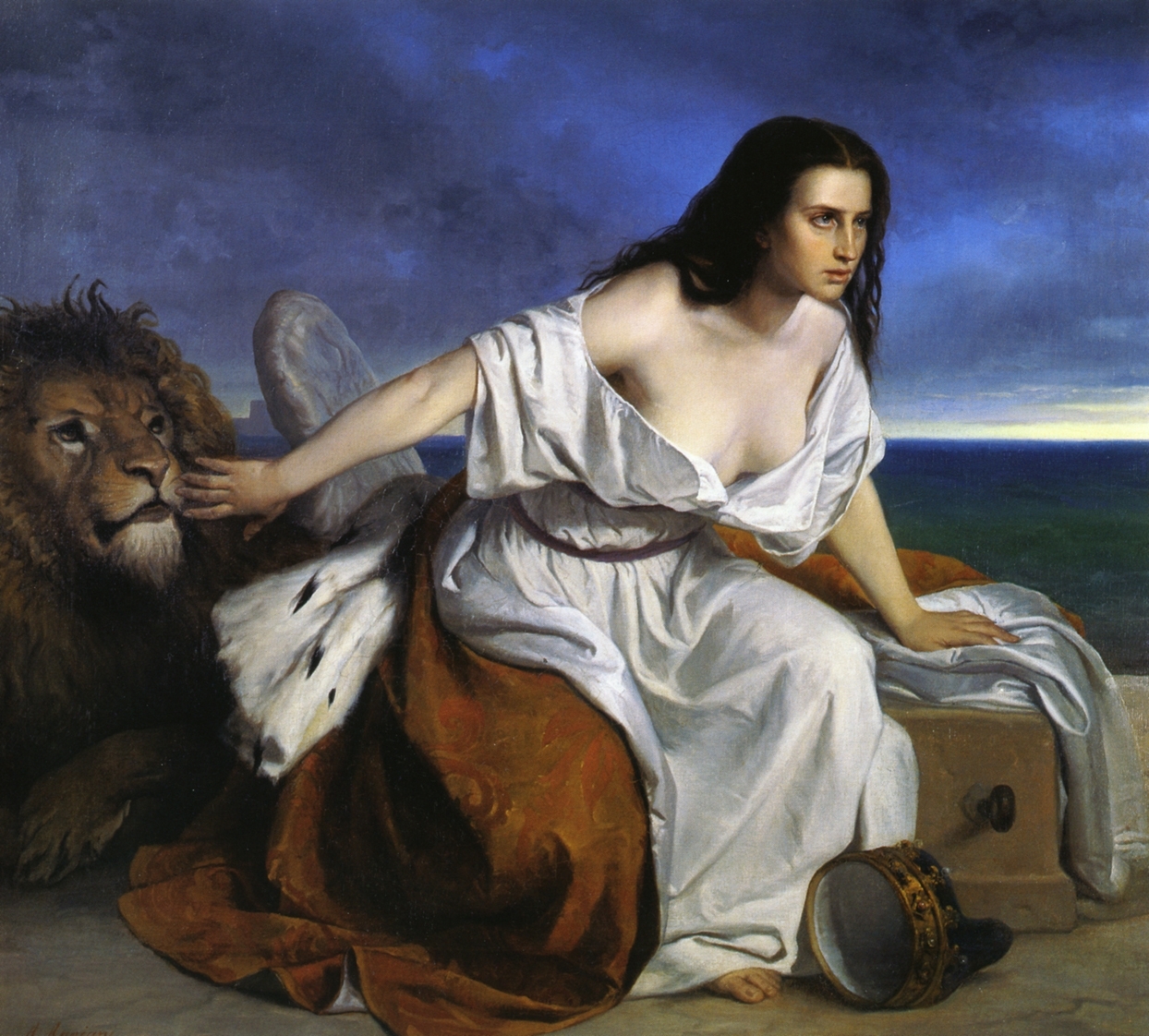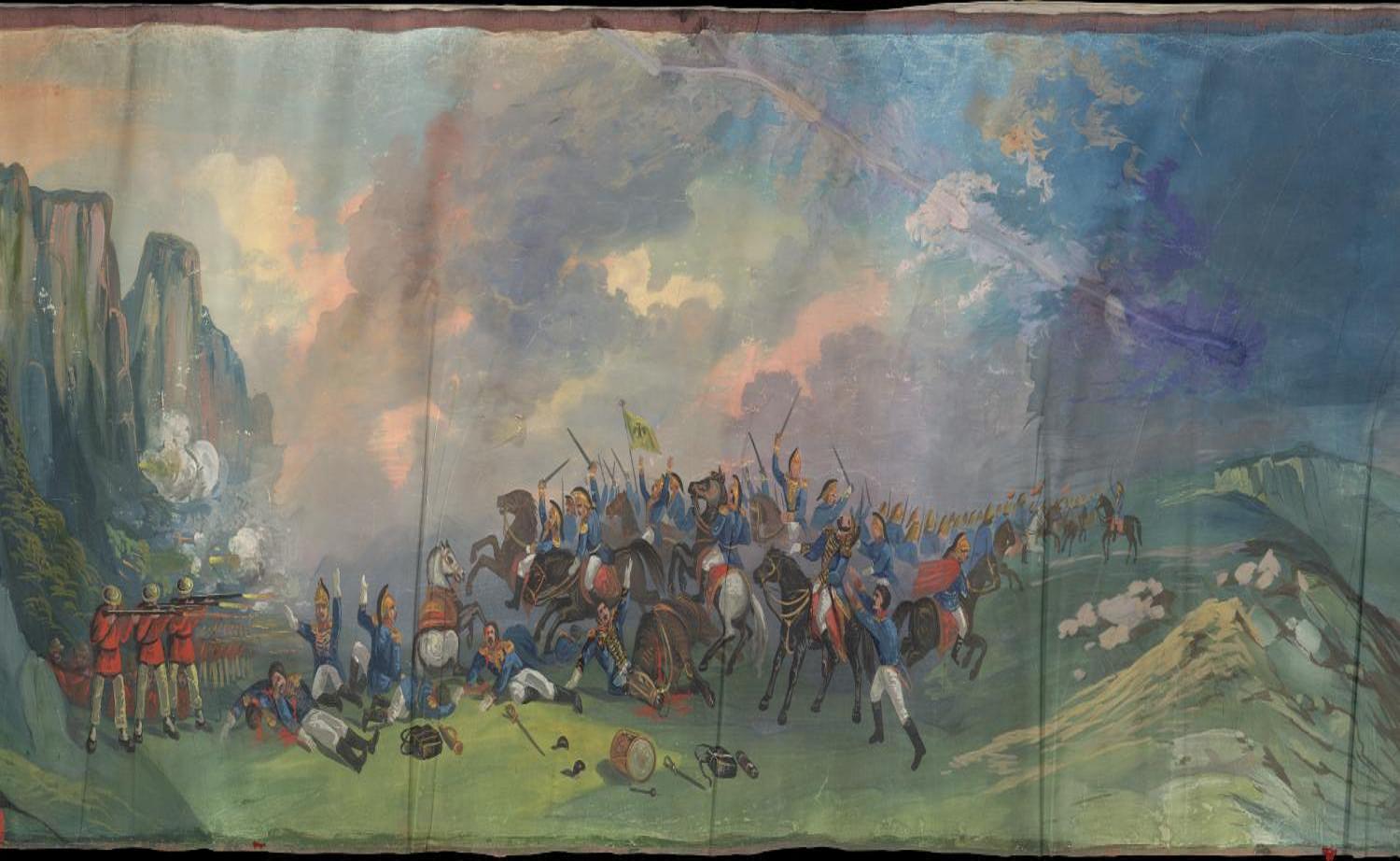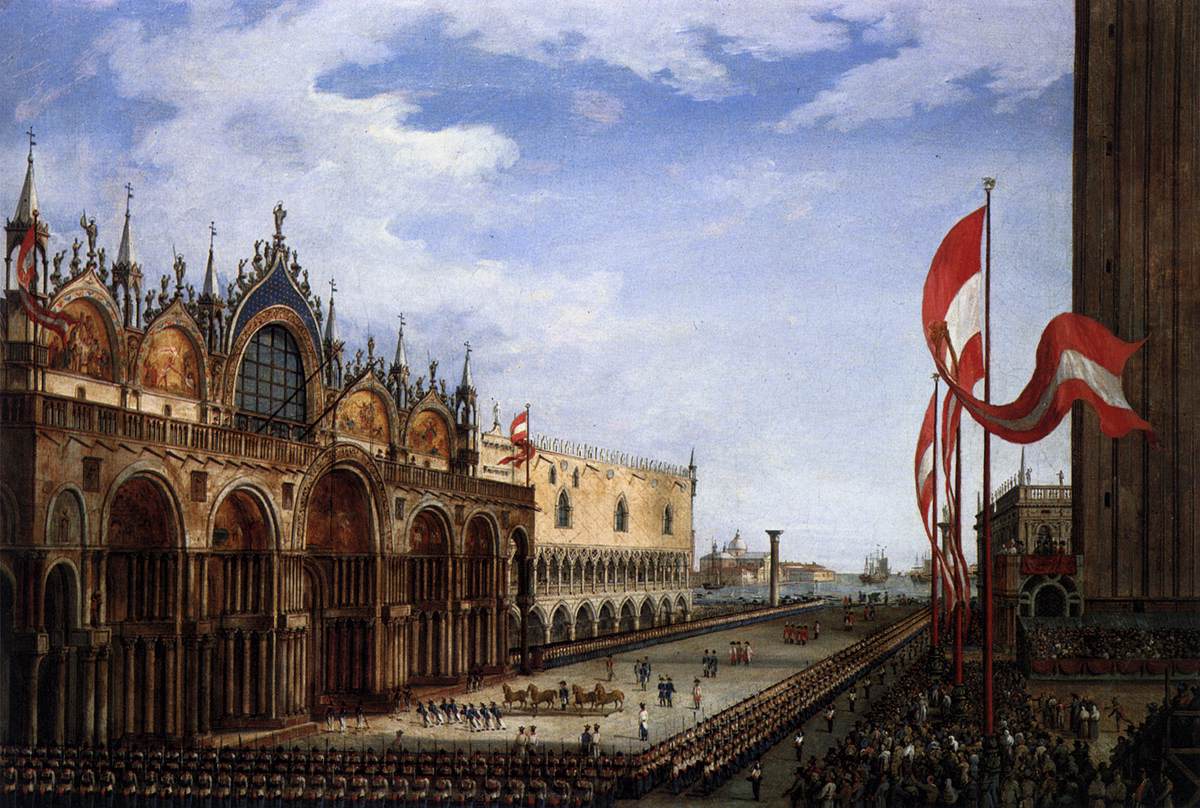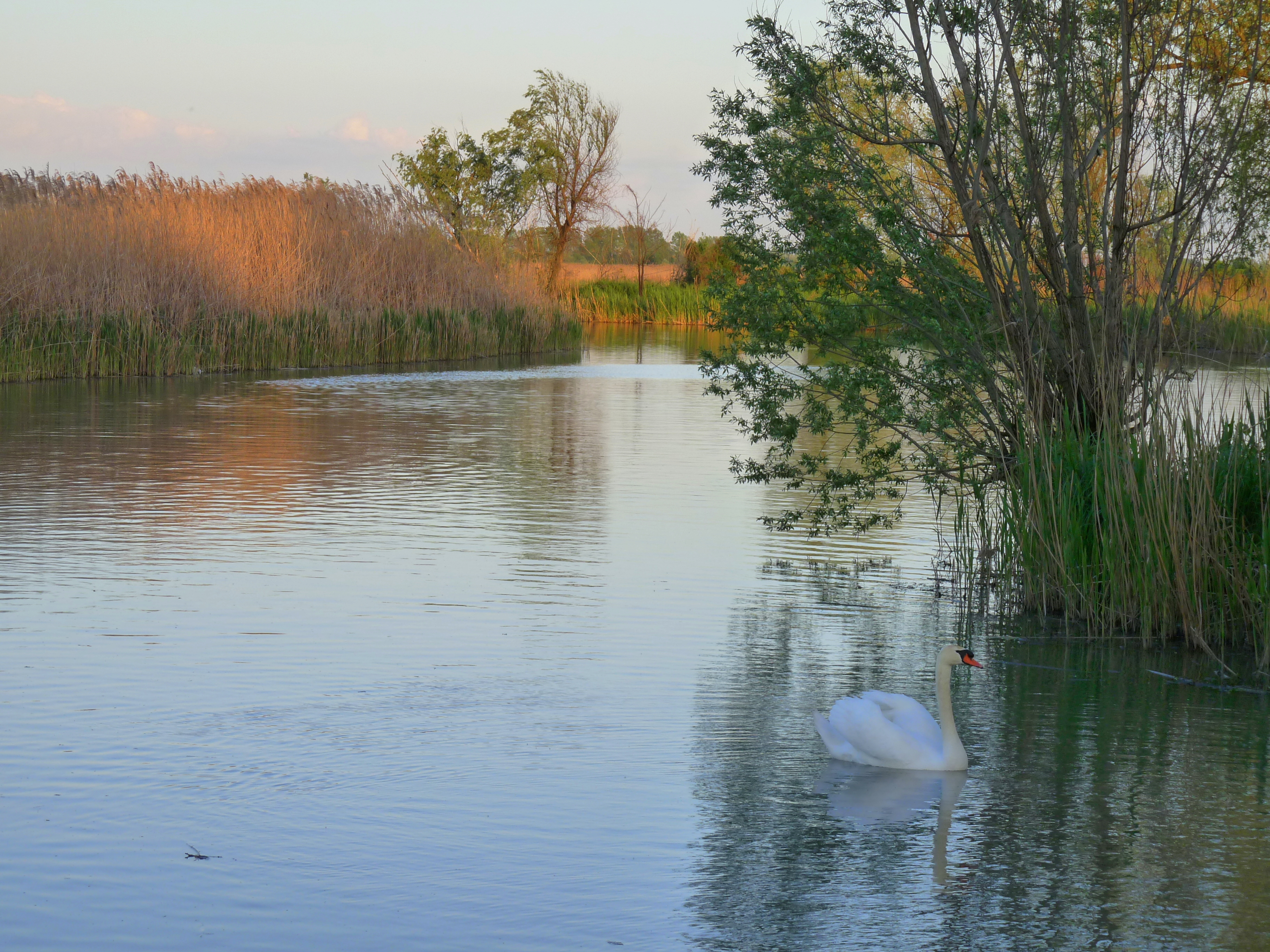|
Armistice Of Cormons
The Armistice of Cormòns was signed in Cormons on 12 August 1866, between the Kingdom of Italy (represented by General Count Agostino Petitti Bagliani di Roreto) and the Austrian Empire (represented by General Baron Karl Möring) and was a prelude to the Treaty of Vienna, which ended the Third Italian War of Independence. On 21 July 1866 the victorious Prussia, which had just inflicted a decisive defeat on the Austrian army at the Battle of Königgrätz, signed the Armistice of Nikolsburg (without consulting the Italian allies). In the same days the Italian Navy was defeated in the Battle of Lissa. On the contrary the Royal Italian Army was taking advantage of the redeployment of many Austrian units to the northern front. Garibaldi's volunteers, reinforced by regular units, gained terrain by invading Trentino and achieved a victory at Bezzecca; the main Italian army led by General Enrico Cialdini reached Udine, while a secondary army led by General Alfonso La Marmora was co ... [...More Info...] [...Related Items...] OR: [Wikipedia] [Google] [Baidu] |
Third Italian War Of Independence
The Third Italian War of Independence () was a war between the Kingdom of Italy and the Austrian Empire fought between June and August 1866. The conflict paralleled the Austro-Prussian War and resulted in Austria giving the region of Venetia (present-day Veneto, Friuli and the city of Mantua, the last remnant of the ''Quadrilatero'') to the Second French Empire (acting as intermediary in negotiations), which formally gave it to Italy. Italy's acquisition of this wealthy and populous territory, annexed with a plebiscite, represented a major step in the Unification of Italy. Background Victor Emmanuel II of Savoy had been proclaimed King of Italy on 17 March 1861 but did not control Venetia or the much-reduced Papal States. The situation of the , a later Italian term for part of the country under foreign domination that literally means ''unredeemed'', was an unceasing source of tension in the domestic politics of the new kingdom and a cornerstone of its foreign policy. The fi ... [...More Info...] [...Related Items...] OR: [Wikipedia] [Google] [Baidu] |
Cormons
Cormons or Cormòns (; ) is a (municipality) in the Regional decentralization entity of Gorizia in the Italian region of Friuli-Venezia Giulia, located about northwest of Trieste and about west of Gorizia, on the border with Slovenia. Cormons borders the following municipalities: Brda (Slovenia), Capriva del Friuli, Chiopris-Viscone, Corno di Rosazzo, Dolegna del Collio, Mariano del Friuli, Medea, Moraro, San Floriano del Collio, San Giovanni al Natisone. Demographics According to the Italian census of 1971, 4.4% of the population was of Slovene ethnicity. People * Denis Godeas * Sergio Marcon * Valentino Pittoni Transport Cormons railway station is served by trains to Trieste, Udine, Treviso and Venice Venice ( ; ; , formerly ) is a city in northeastern Italy and the capital of the Veneto Regions of Italy, region. It is built on a group of 118 islands that are separated by expanses of open water and by canals; portions of the city are li .... Refer ... [...More Info...] [...Related Items...] OR: [Wikipedia] [Google] [Baidu] |
Battle Of Bezzecca
The Battle of Bezzecca was fought on 21 July 1866 between Italy and Austria during the Third Italian War of Independence. The Italian force, the Hunters of the Alps, were led by Giuseppe Garibaldi, and had invaded Trentino as part of the general Italian offensive against the Austrian force occupying north-eastern Italy after the decisive Prussian victory of Battle of Königgrätz, which had led Austria to move part of their troops towards Vienna (see Invasion of Trentino). The Austrians, commanded by ''Generalmajor'' Franz Kuhn von Kuhnenfeld, attacked and occupied the city of Bezzecca. The Italians counterattacked to recover the lost town. Garibaldi himself, moving on the battlefield in a coach because of a wound from a previous encounter, was in danger of being captured. The Italian artillery took a hill close to the town, and an assault by the Italian infantry caused the Austrians to withdraw to their emplacements in the surrounding mountains, thus marking an Italian vic ... [...More Info...] [...Related Items...] OR: [Wikipedia] [Google] [Baidu] |
Lombardy
The Lombardy Region (; ) is an administrative regions of Italy, region of Italy that covers ; it is located in northern Italy and has a population of about 10 million people, constituting more than one-sixth of Italy's population. Lombardy is located between the Alps mountain range and tributaries of the river Po (river), Po, and includes Milan, its capital, the largest metropolitan area in the country, and among the largest in the EU. Its territory is divided into 1,502 ''comuni'' (the region with the largest number of ''comuni'' in the entire national territory), distributed among twelve administrative subdivisions (eleven Provinces of Italy, provinces plus the Metropolitan City of Milan). The region ranks first in Italy in terms of population, population density, and number of local authorities, while it is fourth in terms of surface area, after Sicily, Piedmont, and Sardinia. It is the second-most populous Region (Europe), region of the European Union (EU), and the List of ... [...More Info...] [...Related Items...] OR: [Wikipedia] [Google] [Baidu] |
Kingdom Of Lombardy–Venetia
The Kingdom of Lombardy–Venetia (), commonly called the "Lombardo-Venetian Kingdom" (; ), was a constituent land (crown land) of the Austrian Empire from 1815 to 1866. It was created in 1815 by resolution of the Congress of Vienna in recognition of the Austrian House of Habsburg-Lorraine's rights to the former Duchy of Milan and the former Republic of Venice after the Kingdom of Italy (Napoleonic), Napoleonic Kingdom of Italy, proclaimed in 1805, had collapsed. The kingdom only survived for fifty years—the region of Lombardy was ceded to Second French Empire, France in 1859 after the Second Italian War of Independence, which then immediately ceded it to the Kingdom of Sardinia (1720–1861), Kingdom of Sardinia. Lombardy-Venetia was finally dissolved in 1866 when its remaining territory was incorporated into the recently proclaimed Kingdom of Italy following the kingdom's victory against Austria in the Third Italian War of Independence. History Creation In the Treaty of Pa ... [...More Info...] [...Related Items...] OR: [Wikipedia] [Google] [Baidu] |
Second French Empire
The Second French Empire, officially the French Empire, was the government of France from 1852 to 1870. It was established on 2 December 1852 by Louis-Napoléon Bonaparte, president of France under the French Second Republic, who proclaimed himself Emperor of the French as Napoleon III. The period was one of significant achievements in infrastructure and economy, while France reasserted itself as the dominant power in Europe. Historians in the 1930s and 1940s disparaged the Second Empire as a precursor of fascism, but by the late 20th century it was re-evaluated as an example of a modernizing regime. Historians have generally given the Second Empire negative evaluations on its foreign policy, and somewhat more positive assessments of domestic policies, especially after Napoleon III liberalised his rule after 1858. He promoted French business and exports. The greatest achievements included a railway network that facilitated commerce and tied the nation together with Paris a ... [...More Info...] [...Related Items...] OR: [Wikipedia] [Google] [Baidu] |
Friuli
Friuli (; ; or ; ; ) is a historical region of northeast Italy. The region is marked by its separate regional and ethnic identity predominantly tied to the Friulians, who speak the Friulian language. It comprises the major part of the autonomous region Friuli-Venezia Giulia, i.e. the administrative Provinces of Italy, provinces of Province of Udine, Udine, Province of Pordenone, Pordenone, and Province of Gorizia, Gorizia, excluding Province of Trieste, Trieste. Names The name originates from the ancient Roman town of ("Julius Caesar, Julius' Forum (Roman), Forum"), now Cividale del Friuli. Geography Friuli is bordered on the west by the Veneto region with the border running along the Livenza river, on the north by the crest of the Carnic Alps between Carnia and Austrian Carinthia (state), Carinthia, on the east by the Julian Alps, the border with Slovenia and the Timavo river, and on the south by the Adriatic Sea. The adjacent Slovene parts of the Soča/Isonzo valley f ... [...More Info...] [...Related Items...] OR: [Wikipedia] [Google] [Baidu] |
Province Of Mantua
The province of Mantua (; Emilian language#Dialects, Mantuan, Emilian language#Dialects, Lower Mantuan: ; Emilian language#Dialects, Upper Mantuan: ) is a Provinces of Italy, province in the Lombardy region of Italy. Its capital is the city of Mantua. It is bordered to the north-east by the province of Verona, to the east by the province of Rovigo, to the south by the province of Ferrara, province of Modena, province of Reggio Emilia, and province of Parma, to the west by the province of Cremona, and to the north-west by the province of Brescia. History Founded in the tenth century BCE on the plain formed by meanders of the River Mincio, Mantua became an Etruscan civilization, Etruscan town and important trading post for pottery and agricultural products. Despite its defensible position, it was unable to withstand the Celts, Celtic invaders in the sixth and fifth centuries BC who overwhelmed it, and the whole area was later conquered by the Ancient Rome, Romans. By the fifth cen ... [...More Info...] [...Related Items...] OR: [Wikipedia] [Google] [Baidu] |
Venetia (region)
Veneto, officially the Region of Veneto, is one of the 20 regions of Italy, located in the north-east of the country. It is the fourth most populous region in Italy, with a population of 4,851,851 as of 2025. Venice is the region's capital while Verona is the largest city. Veneto was part of the Roman Empire until the 5th century AD. Later, after a feudal period, it was part of the Republic of Venice until 1797. Venice ruled for centuries over one of the largest and richest maritime republics and trade empires in the world. After the Napoleonic Wars and the Congress of Vienna, the former Republic was combined with Lombardy and re-annexed to the Austrian Empire as the Kingdom of Lombardy–Venetia, until that was merged with the Kingdom of Italy in 1866, as a result of the Third Italian War of Independence and of a plebiscite. Besides Italian, most inhabitants also speak Venetian. Since 1971, the Statute of Veneto has referred to the region's citizens as "the Ve ... [...More Info...] [...Related Items...] OR: [Wikipedia] [Google] [Baidu] |
Napoleon III
Napoleon III (Charles-Louis Napoléon Bonaparte; 20 April 18089 January 1873) was President of France from 1848 to 1852 and then Emperor of the French from 1852 until his deposition in 1870. He was the first president, second emperor, and last monarch of France. Prior to his reign, Napoleon III was known as Louis Napoleon Bonaparte. He was born at the height of the First French Empire in the Tuileries Palace at Paris, the son of Louis Bonaparte, King of Holland (r. 1806–1810), and Hortense de Beauharnais, and paternal nephew of the reigning Emperor Napoleon I. It would only be two months following his birth that he, in accordance with Napoleon I's dynastic naming policy, would be bestowed the name of Charles-Louis Napoleon, however, shortly thereafter, Charles was removed from his name. Louis Napoleon Bonaparte was the first and only president of the French Second Republic, 1848 French presidential election, elected in 1848. He 1851 French coup d'état, seized power by force i ... [...More Info...] [...Related Items...] OR: [Wikipedia] [Google] [Baidu] |
Peace Of Prague (1866)
The Peace of Prague () was a peace treaty signed by the Kingdom of Prussia and the Austrian Empire at Prague on 23 August 1866. In combination with the treaties of Prussia and several south - and central German states it effectively ended the Austro-Prussian War. The treaty was lenient toward the Austrian Empire because Otto von Bismarck had persuaded Wilhelm I that maintaining Austria's place in Europe would be better than harsh terms for the future for Prussia. Austria lost Veneto, which had been ceded to Napoleon III of France in the Treaty of Vienna, and he in turn ceded it to Italy. Austria refused to give Venetia directly to Italy because the Austrians believed themselves to have crushed the Italians during the war. The Habsburgs were permanently excluded from German affairs ('' Kleindeutschland''). The Kingdom of Prussia thus established itself as the only major power among the German states. The German Confederation was abolished. The North German Confederation had be ... [...More Info...] [...Related Items...] OR: [Wikipedia] [Google] [Baidu] |
Wawro
Wawro is a surname. Notable people with the surname include: *Geoffrey Wawro Geoffrey Wawro (born 1960) is an American professor of military history at the University of North Texas, and director of the UNT Military History Center. His focus is modern and contemporary military history, from the French Revolution to the pres ... (born 1960), American military historian * Richard Wawro (1952–2006), Scottish artist {{Short pages monitor ... [...More Info...] [...Related Items...] OR: [Wikipedia] [Google] [Baidu] |







